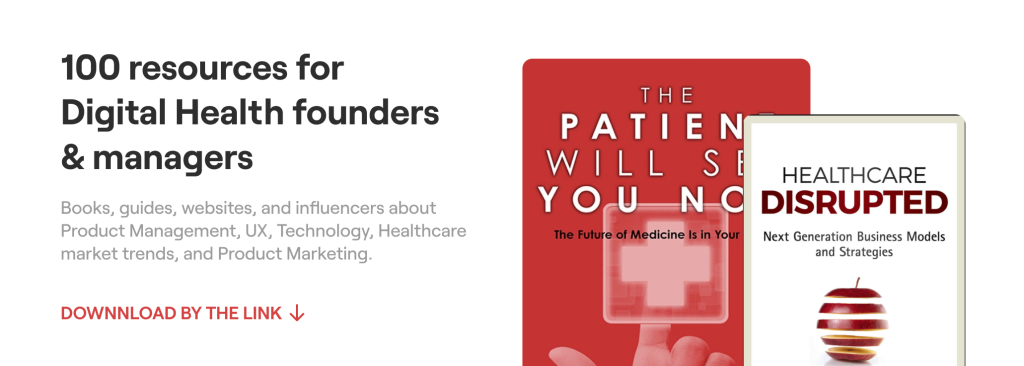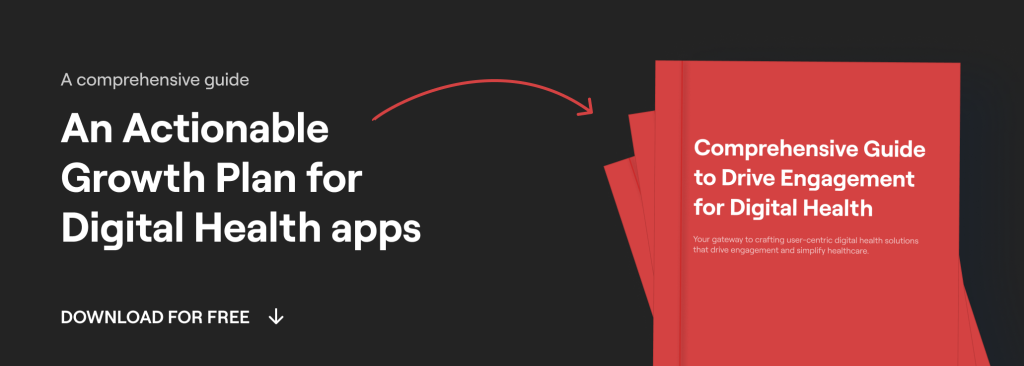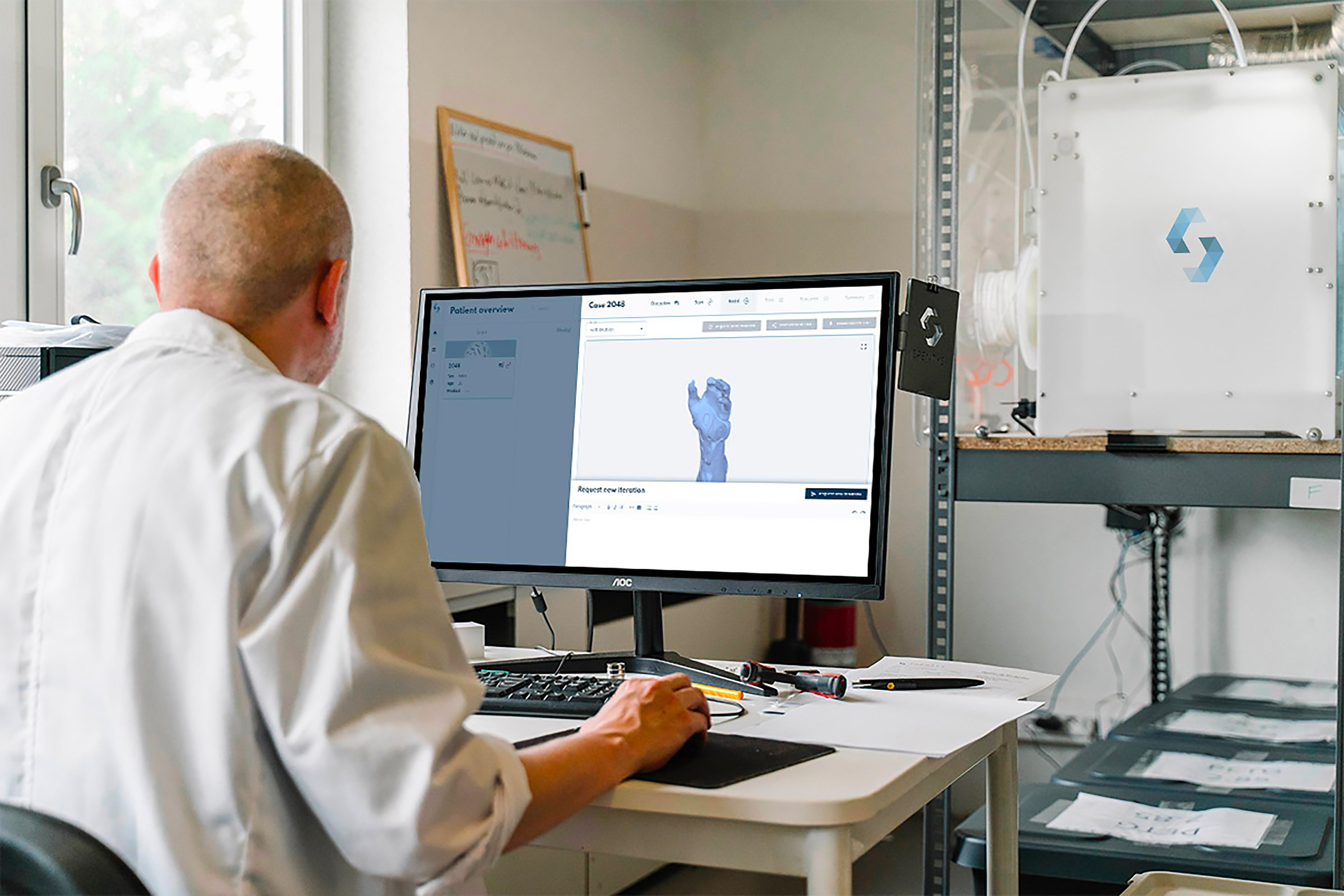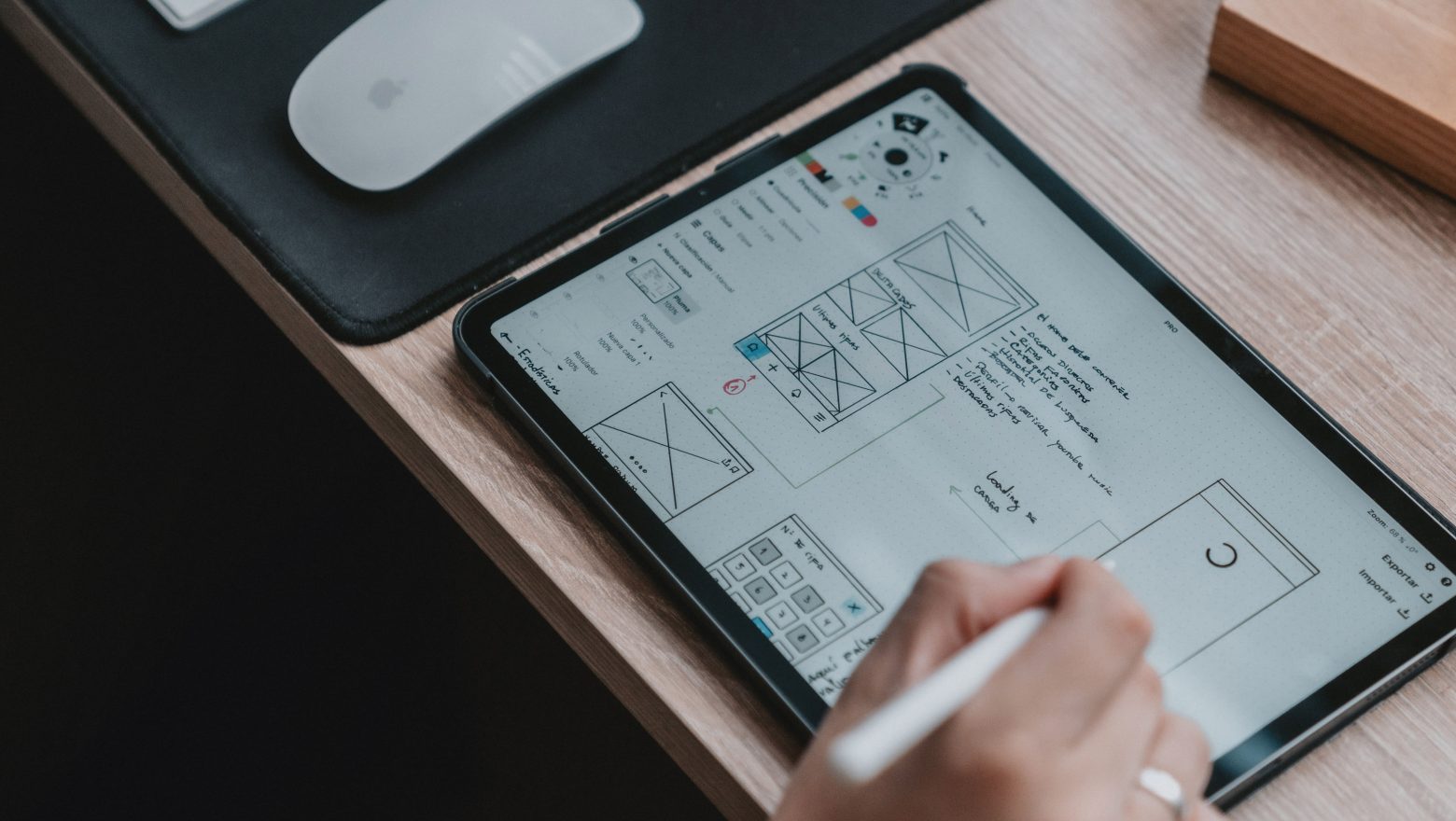One of the reasons why we created Nozomi was because we wanted to make things easier for people. Easier to get treatment, easier to manage chronic conditions, and easier to monitor their current state.
We understand that even the smallest issue still requires effort from a person. That’s why we always welcome innovations in our Healthcare industry that could further simplify the treatment journey for all kinds of people.
Today, we want to share four healthcare technology trends that we’ve observed this year, and they happen to be poised to help people recover faster and enable doctors to work even more effectively.
By the way, before we dive into our article, for keeping track of emerging trends, you can explore our selection of 100 resources (books, guides, websites, and influencers) about Product Management, UX, Technology, Healthcare market trends, and Product Marketing.

Download List of 100 resources for digital health startup founders & managers
Let’s consider Digital Health Technology Trends
1. 3D Bioprinting
What is 3d bioprinting
A regular printer operates in two-dimensional space, transferring an image onto some material. A 3D printer significantly advances this technology as it has access to the X, Y, and Z axes. Three-dimensional printing involves the layered construction of an object specified by an operator using a computer.
And we can even print organs. The thing is, a living organism is essentially a biomachine. Its success directly depends on how harmoniously and effectively the organ components work.
Of course, the problem of a new organ being accepted has long been a challenge in transplantology. But with bioprinters, there’s no need to search for an organ that matches the patient’s antigenic composition. Organs can be artificially created.
Examples of 3D bioprinting:
1. Lab-grown skin: researchers and bioengineers are utilizing artificial leather made from cultured human cells to create skin grafts for burn victims and individuals with severe skin conditions.
Image Credit: youtube channel “3d FAB Fabric of Advanced Biology”
2. Implants for orthopedic surgery: examples of personalized orthopedic implants include bone plates, spinal implants, and joint replacements for the hip, shoulder, and knee.
Image Credit: youtube channel “College of Engineering, Carnegie Mellon University“
These personalized devices offer better alignment and coverage and can also feature trabecular structures that match the bone’s mechanical properties, improve fixation, and promote osseointegration (osseointegration is the direct functional and structural connection between the surface of the implant and the living bone, which enhances implant stability).
3. Implants for reconstructive and plastic surgery: include cranial and maxillofacial implants and bone grafts. Patient-specific implants in this field offer excellent anatomical fit and enable complete restoration and aesthetic results while reducing costs associated with postoperative infections.
4. 3D printing of internal organs: it can be kidneys, bladder, heart, etc. Here it can drastically reduce the organ transplant waiting list, saving countless lives.
It also minimizes the risk of organ rejection since the printed organs are derived from the patient’s own cells. Additionally, it opens up new avenues for research and drug testing, as scientists can study the effects of medications and treatments on lab-grown organs.
Image Credit: youtube channel “Allevi Inc”
3D bioprinting benefits:
1. Personalized medicine: 3D bioprinters have the capacity to create patient-specific implants, prosthetics, and even organs. Such advancement allows for tailored medical solutions that precisely fit an individual’s unique anatomy, resulting in improved outcomes and patient satisfaction.
2. Accelerated drug testing: traditional drug development processes are often time-consuming and expensive. 3D bioprinting enables the creation of functional tissue models that closely mimic human physiology. And they can be used to test the safety and efficacy of new drugs, potentially accelerating the drug development pipeline.
3. Tissue regeneration: one of the most promising applications of 3D bioprinting is in tissue engineering. By layering bioinks containing living cells, it becomes possible to create functional tissue constructs that can be used for grafts, wound healing, and even complex procedures like organ regeneration.
4. Reduced dependency on donor organs: the shortage of available donor organs is a significant challenge in healthcare. 3D bioprinting offers a potential solution by enabling the creation of functional, transplantable organs in the lab.
5. Customized medical devices: beyond organs and tissues, 3D bioprinting allows for the creation of highly customized medical devices: implants, prosthetics, and even surgical tools that are tailored to the specific needs of individual patients.
6. Improved surgical planning: 3D bioprinting facilitates the creation of accurate anatomical models based on patient scans. Surgeons can use these models for pre-operative planning, allowing them to practice complex procedures and anticipate potential challenges before entering the operating room.
7. Advancing research capabilities: researchers can utilize 3D bioprinted models to study diseases, test hypotheses, and develop new treatments. The technology provides a platform for in-depth exploration of cellular behavior, tissue interactions, and disease progression in a controlled laboratory setting.
2. Digital Twin Technology
What is digital twin technology
This technology creates virtual replicas of patients, medical processes, and healthcare systems.
These virtual representations allow for precise monitoring, analysis, and optimization of healthcare practices, leading to enhanced patient outcomes and more efficient healthcare delivery.
Imagine a patient named John who has a heart condition. With digital twin technology, a virtual replica of John’s heart is created using his medical data, including images, scans, and other health information. This digital twin allows doctors to simulate different treatment options and predict how John’s heart will respond to them.
By testing various scenarios in the virtual environment, doctors can choose the best treatment plan for John before actually performing any procedures.
For example, watch the video below from NVIDIA, where the program simulates a surgical environment with an accurate digital twin that leverages synthetic data that can help to improve surgical efficiency and reduce patient time in the operating room.
Image Credit: youtube channel “NVIDIA”
Examples of Healthcare Digital Twin Applications:
1. Personalized treatment planning: digital twins can be used to create a detailed model of a patient’s anatomy, allowing healthcare providers to simulate and plan complex surgical procedures. For instance, in orthopedics, a digital twin of a patient’s joint can help surgeons precisely plan joint replacements.
Image Credit: youtube channel “Siemens Healthineers“
2. Chronic disease management: patients suffering from chronic illnesses can benefit from digital twins that continuously monitor their vital signs and health metrics. So healthcare providers make timely interventions and adjust treatment plans as needed.
3. Drug development and testing: pharmaceutical companies use digital twins to simulate the effects of new drugs on virtual patient populations. Conclusion: accelerate the drug development process and reduce the risks associated with human trials.
4. Healthcare process optimization: digital twins are employed to model and optimize various healthcare processes, such as hospital workflows, patient flow, and resource allocation. Other words more efficient operations and improved resource utilization.
Image Credit: youtube channel “Kinetic Vision”
5. Medical device testing: before physical prototypes are manufactured, medical devices can be tested in a virtual environment. And devices are safe, effective, and compatible with existing healthcare systems.
Benefits of Healthcare Digital Twin Technology:
1. Precision and personalization: tailoring treatments and interventions to the specific needs and characteristics of individual patients.
2. Reduced costs: optimizing healthcare processes and treatments can lead to cost savings for both healthcare providers and patients.
3. Improved patient outcomes: enhancing diagnostic accuracy, treatment effectiveness, and overall quality of care.
4. Accelerated innovation: speeding up the development of new treatments, drugs, and medical technologies.
1. Unveiling our top CX (UI/UX) practices to transform a product into a beloved user experience.
2. Implementing product strategies to foster retention and engagement.
3. Embracing our foremost engineering practices for constructing scalable solutions.
4. Guidance on ensuring compliance with healthcare regulations.

Download Free Actionable Insights to Grow your Digital Health app
3. Nanomedicine
What is nanomedicine
Nanomedicine involves the use of nanoscale materials, such as nanoparticles or nanorobots, to diagnose, treat, and prevent diseases. These tiny structures can interact with cells and molecules at the nanoscale, allowing for precise and targeted medical interventions.
Actually, this field started gaining popularity over a decade ago. However, it’s only now that such technologies are gradually making their way into our everyday lives. Recently a fantastic piece of news circulated worldwide: scientists had created tiny organic robots (known as xenobots) capable of self-replication.
Examples of nanomedicine:
1. Targeted drug delivery: nanoparticles act as precision-guided carriers, transporting medications directly to specific cells or tissues. It not only enhances therapeutic efficacy but also minimizes side effects, revolutionizing drug delivery mechanisms.
Image Credit: youtube channel “Institute for Molecular Bioscience“
2. Diagnostic advancements: nanosensors and imaging agents offer unparalleled sensitivity in detecting biomarkers and abnormalities. Such early and accurate diagnosis lays the foundation for proactive healthcare management.
3. Regenerative medicine: nanoparticles play a pivotal role in tissue engineering and regeneration. By facilitating cellular repair at a fundamental level, they hold immense potential in treating injuries and degenerative conditions.
4. Cancer therapy: engineered nanoparticles, like gold nanoparticles, hold tremendous promise in cancer treatment. Through techniques such as photothermal therapy, they selectively target and eliminate cancer cells, offering a highly precise and effective approach to therapy.
Image Credit: youtube channel “Sam Kriegman“
Advantages of nanomedicine:
1. Enhanced precision: nanomedicine operates at the molecular and cellular levels, enabling precise interventions.
2. Minimized side effects: by targeting specific cells or tissues, nanomedicine reduces the systemic impact of treatments, minimizing side effects commonly associated with conventional therapies.
3. Early detection and intervention: nanoscale diagnostic tools offer unparalleled sensitivity, enabling early detection of diseases and abnormalities.
4. Personalized treatment plans: the precision of nanomedicine allows for highly tailored treatment strategies, accounting for individual patient characteristics and needs.
5. Potential for multimodal therapies: nanomedicine opens doors to combining various therapeutic modalities, creating synergistic approaches for tackling complex medical conditions.
6. Revolutionizing drug development: nanotechnology accelerates the discovery and development of new drugs, offering novel avenues for therapeutic interventions.
4. Robotic Process Automation (RPA)
Robotic Process Automation in healthcare
You might be wondering, where is AI? We can observe its specific practical applications in its most common branch.
Robotic Process Automation (RPA) is a technology employing software robots to emulate human actions, specifically focusing on repetitive, rule-based tasks. These bots are meticulously programmed to adhere to predefined rules and workflows, enabling them to execute tasks with remarkable speed and precision, surpassing human capabilities.
For instance, imagine a script guiding the bot to scan medical workers emails, extract pertinent data, and seamlessly integrate it into another system. The bot executes these instructions autonomously (mimicking human actions with a high level of autonomy), eliminating the need for constant supervision.
To illustrate, look at the example from the company UiPath:
Image Credit: youtube channel “UiPath“
Unlike conventional automation, which often entails the replacement of human workers with machines (e.g., assembly line robots), RPA operates in synergy with human workers. Think of RPA as a virtual assistant that collaborates with individuals to efficiently complete tasks.
Examples of RPA in Healthcare:
1. Appointment scheduling and reminders: RPA systems can handle appointment bookings, confirmations, and reminders.
2. Claims processing: RPA accelerates claims processing by extracting and validating data from various documents, ensuring accuracy and compliance with insurance regulations.
3. Billing and invoicing: RPA automates billing processes, including generating invoices, verifying insurance information, and processing payments, reducing billing errors and accelerating revenue cycles.
4. Data entry and management: RPA systems swiftly input patient data into electronic health records (EHRs), ensuring accuracy and freeing up staff for more critical tasks.
5. Regulatory compliance: RPA ensures that healthcare institutions adhere to regulatory requirements by automating compliance checks and reporting.
6. Telehealth support: RPA can facilitate patient onboarding for telehealth services, including appointment scheduling, verification of insurance, and providing necessary documentation.
Robotic process automation in healthcare advantages:
1. Enhanced efficiency: RPA significantly reduces the time spent on routine administrative tasks, allowing healthcare professionals to allocate more time to patient care.
2. Error reduction: automation minimizes human error in data entry, claims processing, and other critical tasks, enhancing the accuracy of healthcare operations.
3. Cost savings: by automating labor-intensive processes, healthcare organizations can achieve substantial cost savings, leading to improved financial health.
4. Improved patient experience: streamlined processes lead to quicker response times, reduced waiting periods, and overall improved patient satisfaction.
5. Compliance and security: RPA ensures that healthcare processes comply with industry regulations and safeguards sensitive patient information.
By the way, here we wrote about Healthcare Technological Trends of 2024

We hope this article was useful for you!
Who we are? We are a digital health product studio, who transforms healthcare digital experiences and sets new standards for delivering digital healthcare in a way that positively impacts people’s lives.
We assist healthcare startups in designing and developing digital products, while also helping healthcare organizations undergo transformative changes.
If you are interested about our experience check our portfolio with case studies by the link or you can read more about us here.
And write to us now on m@nozomihealth.com and we will discuss how we can help ensure that your product brings real benefits







